When I reflect on the single biggest technology change in 2020, I think of the way that small business owners around the world rose to the challenge and adopted digital tools at a speed and scale unlike anything in living memory. For some, having the right tech was vital for staying connected to their team and customers. For others, it was the difference between closing their doors and maintaining a regular income—a lifeline to support their families and communities.
In a recent McKinsey survey, executives said the share of digital products in their companies accelerated by seven years in just a few months. According to Shopify, there was 10 years’ worth of ecommerce growth in just 90 days during the height of the pandemic. So what does this mean for you? While technology has been the backbone of survival for many businesses this year, there’s no doubt this explosion of digital growth will continue to shape how we live and work in 2021.
The rise of predictive insights
In the months ahead, businesses won’t just want to know how they have performed in the past, but also what the future might look like for their business finances. This will give them more stability when it comes to cash flow, while also giving them peace of mind that they’re prepared for whatever the future may bring.
At Xero, we foresee a sharp rise in the number of business tools that offer predictive insights, driven by artificial intelligence and machine learning technologies. Our first move into this space was earlier this year, when we accelerated the release of our business snapshot and short-term cash flow tools to support our customers during COVID-19.
The dashboard-style tools are a simple way to view critical business metrics at a glance, and see what your projected bank balance might be 7 or 30 days in the future. Our aim is to empower small businesses and their advisors with the insights they need to make better business decisions, whether it’s deciding when to pay a bill or making sure there’ll be enough cash for payroll next week.
The digitisation of compliance
In recent years, there has been a slow and steady shift towards digitised compliance by governments around the world, particularly when it comes to managing tax. It’s about time really—most of the world’s tax systems were invented after World War One, so they’re incredibly old. Making Tax Digital (MTD) was a significant step towards this modernisation.
Nearly all UK businesses will need to file their tax returns digitally by early 2022, so we’ll see a faster rate of digital adoption as the deadline draws near. Having the right technology in place to automate compliance—such as Xero Tax for accountants—means less paperwork and fewer mistakes, so it’s going to be critical for businesses who need more time to focus on business growth.
A greater focus on privacy and security
With more businesses moving online and the rise in remote workers using home or public wifi connections, privacy and security has become more important than ever. Verification technology like two-step authentication is already mandatory in Australia and it’s likely this will be rolled out in other countries over the next few years.
There is also likely to be a greater push for global privacy and security standards for customers in the months and years to come. In a connected economy, businesses need the right technology and processes to not only protect their customers’ information, but communicate clearly with them about how they collect, store and protect their data.
A connected suite of business tools
Apps have been a lifeline for many small businesses, helping them streamline finances, monitor cash flow in real time, and more. In fact, our data shows that small businesses who used apps to manage their business before COVID-19 saw a 12 per cent smaller revenue decline than those who didn’t. Those that had five or more apps connected to Xero had revenue falls that were one third smaller.
In 2021, we’ll see even more small businesses looking to build a portfolio of connected apps to help them manage their business more efficiently. This will drive demand, resulting in a wave of innovative startups, as well as custom integrations using open APIs between platforms like Xero and app marketplaces around the world.
The acceleration of open banking
If you asked small businesses if they currently use open banking, many would say no. The reality is that open banking has been enabling many of the digital tools that have helped businesses survive this year. From bank feeds, to digital payments, cash flow apps and faster access to capital—open banking is changing the game for businesses.
Research by the Open Banking Implementation Entity found that half of UK small businesses have increased their use of open banking tools since the start of the pandemic, as they look to future-proof their operations. In 2021, we’ll see fintechs continue to reimagine the idea of traditional banking and give small businesses access to powerful technologies through new integrations.
There’s no doubt that COVID-19 will have a long-lasting impact on nearly every aspect of our society. Many businesses who were traditional at their core have realised how powerful technology can be. It’s a defining moment, when they realise there are tools to help them streamline processes, collaborate remotely and even open up new revenue streams.
None of us can predict what 2021 will hold—but it’s guaranteed that digital adoption will continue to have a transformative role on the way we do business.
Written by: Anna Curzon – Xero


